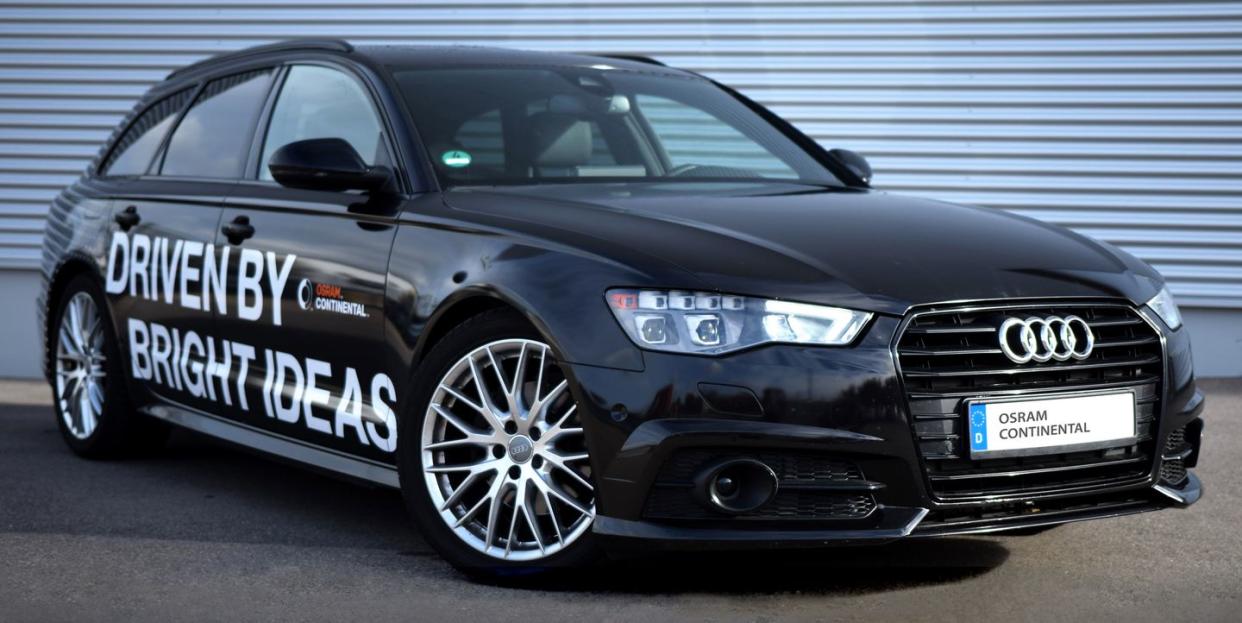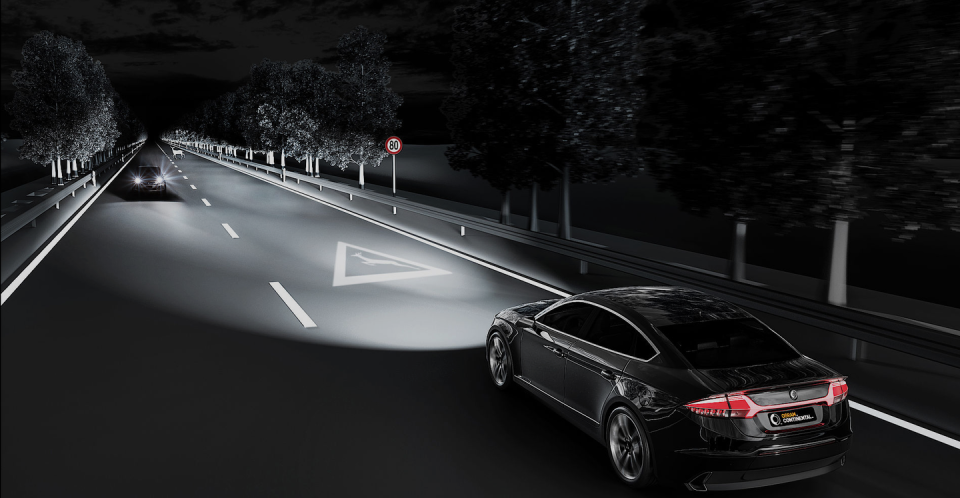These Headlights Have 8092 Pixels That Can Be Individually Controlled

Osram Continental, a joint venture between two automotive suppliers, showed off headlights that permit vastly more granular control of the beam pattern than the multi-LED headlights that are today's norm.
These could enable drivers to switch off pixels to avoid blinding oncoming traffic, or to choose a pattern that will best highlight potential obstacles on the road.
The company predicts that this new technology will be cost-competitive with current multi-LED headlights.
Behind the four projectors and the layers of glass and plastic lenses on the prototype headlights on this Audi A6 sit 8092 individually controllable light pixels on eight LED modules that enable micromanaging of the shape of the beam pattern. In addition to relatively familiar functionality that exists today, such as light that swivels when turning, this system would allow automatically switching off just enough pixels of the high-beams to keep from blinding oncoming traffic—or to highlight obstacles, the edge of the road, or signage with brighter light.

Michael Rosenauer, head of advanced development, says his team has been working on this technology for roughly three years. He predicts that the granularity of headlight control will continue to grow exponentially in the near future and that the next-gen system, due out in a couple of years, will have 25,000 pixels per chip versus 1024 on this system. And since each LED on this current prototype measures 4 millimeters square, these are indeed very tiny pixels. As you can see in this accompanying video from the demonstration we saw, even with this many pixels they still look large at an 82-foot distance. And there's a visible dark zone between each module that Rosenauer promises would be better blended in production.
Mercedes-Benz has debuted even more sophisticated, limited-production headlights on the Mercedes-Maybach S-class. They use millions of tiny reflectors to manipulate the beam and enable projection of much more sophisticated imagery. However, Rosenauer claims that Osram Continental's technology will be far cheaper—cost competitive with today's multi-LED headlights. These use individual LEDs rather than the pixelated LED modules on this prototype, such as the ones standard on the new 2020 Mercedes-Benz GLS that have 112 LEDs in each headlamp. Those LEDs can be individually controlled to enable changing the beam pattern, although obviously with less precision.
Unfortunately, shaping the high-beams so as not to blind oncoming traffic is not yet legal in the United States, where the current regulations require distinct high-beam and low-beam states, with nothing in between. The National Highway Traffic Safety Administration (NHTSA) recently issued a notice of proposed rulemaking that would enable this technology. But even if this new regulation passed, it would still restrict high-beam brightness to about a third of what's allowed in Europe, Rosenauer says.
('You Might Also Like',)

